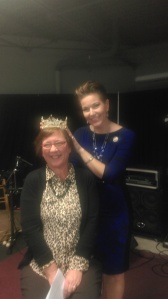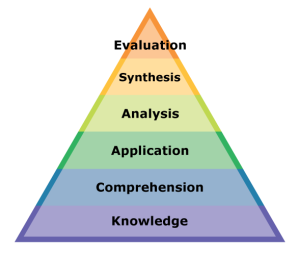This past week I’ve had two college guys named Johnny* and Christopher* building a table in my garage. They live in an apartment and asked if they could use our tools and our space to carry out their building project.
I’ve been wandering past them as I come and go from the house, seeing their progress and chatting about things going on in their lives. Our lives have intersected in a number of different ways over the past 10 years so there’s always a lot to talk about.
This has gotten me to thinking about friends. And schooling. And raising kids.
Johnny and Christopher were homeschooled. They were very close friends of my second son, Jesse. Collectively, they probably weren’t an impressive group to people who care a lot about school grades and academic discipline. They marched to a little different drummer and they spent a lot of time in high school thinking about how to avoid doing schoolwork. In the homeschool co-op where I was a leader and teacher, the three boys often appeared disinterested in their classes and they got in their share of trouble. Christopher often bragged that he rarely did any schoolwork and was typically working long into the summer trying to catchup.
So, how are these two “troublemakers” doing today? Johnny and Christopher are not just doing well, they seem to have surpassed a lot of their peers in many of the ways that count. Christopher is working himself through college and, in the process, was recently promoted to a managerial position in the large company where he works. He’s a high school ministry leader at a local church. He’s the first person we call on in the family business for assistance in a bind when we need a hard worker, a person we can trust, and someone who can take charge and manage issues as they arise with a large degree of confidence and good sense.
Johnny is finishing up on college and owns an online business. He’s a vociferous reader and reads the writings of all the great philosophers for pleasure. It’s hard to keep up with him in a discussion or argument about politics, philosophy or sociology. This past summer he and my son decided it would be fun to spend some time in a foreign country so they purchased the cheapest airline ticket to the cheapest country they could find to visit and spent three weeks living on their own in Germany, Switzerland, France, and Czechoslovakia. They are fearless that way.
Johnny and Christopher are independent and self-directed, confident to a fault at times. They are also fun and funny. The apartment they share is constantly full of friends. There’s a string of girls lined up that want to date them. Life is not passing them by.
But this is not just a tale about Johnny and Christopher. It’s a tale about the teachers who teach them. And that includes me.
You see, when Johnny and Christopher said they wanted to build a custom table for their apartment in our garage I immediately reverted back to my old teacher/student relationship with them. In other words, I started telling them what to do. And what I was telling them was ALL wrong.
First, I immediately assumed that since Johnny and Christopher had no construction experience that they couldn’t build a table. So I told them they should buy one. Second, because I knew they had little money, I suggested Goodwill or the Habitat for Humanity Re-Store as places to shop. I did what a lot of adults and teachers do when they relate to children: I tried to replace their goals with mine and completely lowered expectations in the process.
Thankfully, true to form, Johnny and Christopher didn’t listen to the teacher.
You see, Johnny and Christopher didn’t want MY table. They wanted a custom table that would perfectly fit the space and meet the varied needs of the people living in their apartment at the time. They never even considered the possibility they couldn’t build the table, proving once again that confident and resourceful people can accomplish and learn almost anything if they really want and need to do it (if they haven’t been convinced otherwise by teachers and other “do-gooders.”) People who really want something don’t need a formal class or curriculum in order to do it. And they certainly don’t need a trained teacher to help them figure it out.
Here’s how Johnny and Christopher built the table: They designed a bar-style, high-top table that would fit perfectly snug between two walls in their apartment. They then tracked down FREE wood (pallets) so they could afford to build what they wanted. They followed that up by borrowing from friends the tools and space they needed to build the table. They carved out time from their busy school and work schedules to work late into the night throughout the course of a week. They were resourceful enough to ask my husband for design and construction advice along the way. (And to borrow our truck to haul the table back to their apartment once it was built). The finished piece was truly useful and beautiful.
A Tale of Two Troublemakers. (And the Teachers Who Teach Them.) serves as a great reminder of how adults often mishandle smart kids and learning. We (adults) think we have all the answers and that children will benefit from what we know. But children learn by creating and problem-solving on their own, not being force-fed answers to questions they didn’t ask. We limit children to our own understanding of the world, holding them back from becoming much greater than we ever were. We suggest imperfect solutions that don’t meet needs when children are willing and able to construct perfect ones that do.
Johnny and Westin wanted a custom table in their apartment and I suggested a common one. They wanted a masterpiece and I suggested a piece of junk. They wanted to work hard and I suggested they take the easy way out.This is the way of teachers.
Thankfully, Johnny and Westin don’t listen to teachers. They have always been “troublemakers.”
Until next time….Be fearless.
*Names have been changed.


